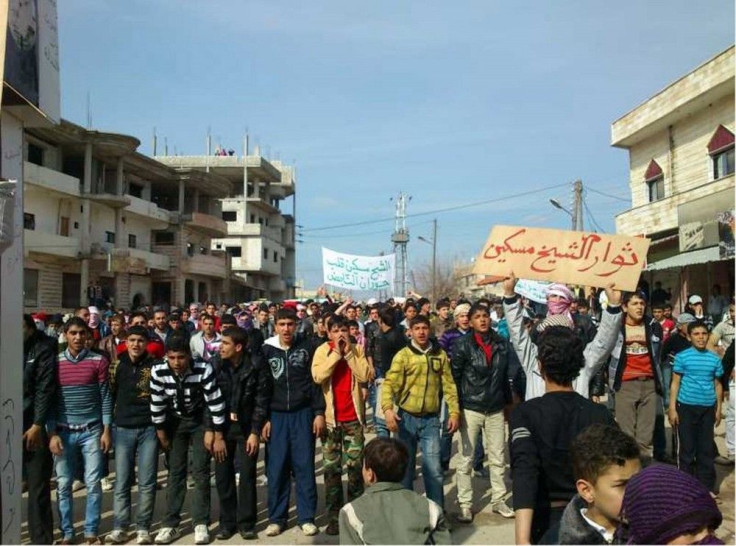Syria Unrest: Who Are Assad's Mercenary Thugs Raising Riot on the Streets of Damascus?

Syria's inclination towards a civil war is fuelled by President Bashar al-Assad's insistence on suppressing his opponents from the Free Syrian Army (FSA). Assad could not have carried out his terror campaign without the assistance of the Shabiha, a heavily-armed group of men fighting alongside the army and security services.
The Arabic term originally meant Ghosts, but has later taken on the meaning for armed gangs or thugs run by members of the al-Assad family. Recruited from the ranks of Assad's Alawite religious sect, these gangs, known to operate a network of illegal activities, have increasingly taken to killing and beating civilians who show any inclination towards the rebels.
In many ways, the Shabiha are feared far more than the Syrian army itself. Not only has the group carried out sectarian attacks but also executions, drive-by shootings and destruction of property. According to the Telegraph, the Shabiha have been known to barge into homes, executing those who it thinks is an opposition member.
As per the report, a Shabiha militant is paid up to 2000 Syrian pounds (about $40 dollars) a day. The gang member also charges more for operating on Fridays, a day considered appropriate for large protests to take place following Friday prayers.
They have weapons and a license to kill, Omar al Khani of the Syrian Revolution Coordinators Union, was quoted as saying to the publication. The government brings these gangs to protests.
Most are recruited by the intelligences services. They are given a free hand to do what they want. If they kill for job no questions are asked, added Khani. It is the policy of the Free Syrian Army to kill the Shabiha.
Assad's regime often deploys the thugs dressed in civilian clothes as a means to cause confusion among the public during their brutal rampage on the streets. However, other reports indicate that the militia had even donned black uniforms with machine guns in hand.
The Shabiha first appeared in 1976 when the Syrian army entered Lebanon during the Lebanese civil war. The forces consisted of mostly young men from the coastal Syrian cities of Latakia, Tartus and Banias, which have high concentrations of Alawites.
According to journalist Adrian Blomfield from the Telegraph, the group was seemingly disbanded by president Bashar al-Assad once he came to power 12 years ago. According to reports, the gang, which comprises 20,000 men as of now, re-emerged during the Syrian uprising in 2011. Since then, the group has been used by the regime in silencing the demonstrations taking place inside the country.
Membership of the Shabiha is drawn largely from President Assad's minority Alawite sect, which dominates the government, security services and military.
Shabiha's operations go beyond security. Members of the group are also involved in media operations and tally military movement while ensuring adherence to government orders.
Recent reports have indicated that Assad's once-unshakeable grip on power might soon crumble, with the Syrian regime running out of funds to maintain the Shabiha militia. As a consequence, the group may turn its back on the regime, thereby leading Assad to lose control on the ground. The U.S. has already imposed tough sanctions on Damascus in response to the crackdown, according to reports.
© Copyright IBTimes 2024. All rights reserved.











